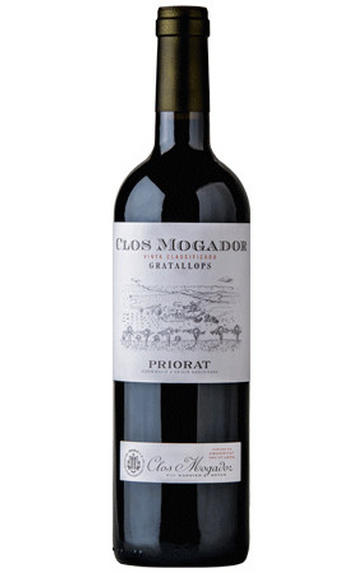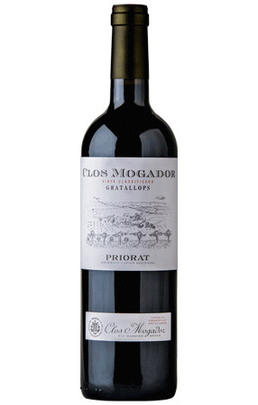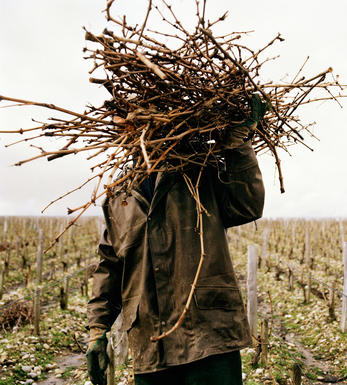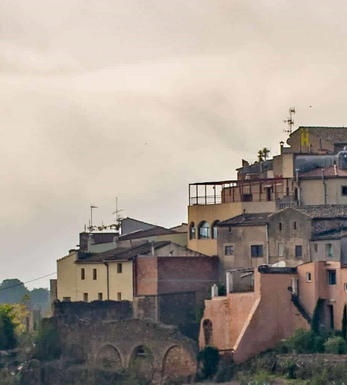
2020 Clos Mogador, René Barbier, Priorat, Spain

Critics reviews
26,000 bottles produced.
The 2020 Clos Mogador comes from a very challenging vintage in Priorat, a year with lots of rain and some fungus problems that are very unusual in the zone, which is usually very healthy. They bought a further four hectares so they could keep the volume despite the difficulties with mildew. The wine is more tannic and a little astringent despite now having any time in barrels anymore; starting this year, it matured exclusively in 2,000-liter oak foudre, and the impact of the wood is milder.
A very good result, it's powerful but has good balance. The vintage is more tannic, and the quality of the tannins is not the same as those from 2019, as they couldn't wait for better tannins because of the risk of losing acidity and freshness.
Drink 2024 - 2032
Luis Gutiérrez, Wine Advocate (September 2022)
45% Garnatxa, 29% Carinyena, 16% Syrah and 10% Cabernet Sauvignon.
Ripe strawberries, black cherries, dark spices and a hint of dried fruit, too. Pretty full-bodied on the palate with tons of polished, seductive tannins that melt into the fruit. Rich, juicy and long. Sweet tannins.
Drink or hold
Zekun Shuai, Senior Editor for JamesSuckling.com (September 2023)
Founded in 1979, the 20ha Clos Mogador lies at 350m altitude , surrounded by mountains up to 1,200m. The vines here grow on slate soils and the 2020 wine is a blend of 45% Garnacha, 29% Cariñena, 16% Syrah and 10% Cabernet Sauvignon, fermented using 30% whole bunches and indigenous yeasts. The wine was aged entirely in 2,000L French oak foudres for 18 months before bottling. Beth Willard: A really dark and intense wine that speaks of the region. High-toned, perfumed notes and raspberry on the nose.
Oak is well integrated. Big and rich, but with underlying elegance. Polished and serious. Diana Rollan: Dense and powerful nose with dark fruit, and notes of plum, black cherry, blueberries, sandalwood and dried herbs. Big and bold with pronounced tannins, but round and textured. David Williams: Complex nose with notes of blood orange, black cherry and Mediterranean herbs. Intensity but also drive on the palate; great mineral acidity, freshness.
Drink 2022 - 2035
Beth Willard, Diana Rollan and David Williams, Decanter.com (December 2022)
About this WINE

Rene Barbier

Priorat
Priorato, or Priorat, is one of the stand-out Spanish wine regions, with an extraordinary leap in wine quality, reputation and price over the 1990s. This small wine appellation, with 1,700 hectares of vines and just over 60 bodegas, lies to the west of the province of Tarragona in Catalonia.
It includes the municipalities of Scala Dei, Gratallops and Falset, where vines grow on steep terraces at varying altitudes of 100 to 700 metres. The climate is continental, and the region blessed with an exceptional schistous terroir (mostly llicorella with layers of slate and quartz). This schist is part of the same stratum found in the finest vineyards of the Douro, Toro and Ribera del Duero. It provides ideal conditions for growing vines and also contributes to the much-lauded mineral-rich character of Priorato’s wines.
The region’s wines were revolutionised through the efforts of René Barbier. In 1989 he joined forces with a group of eight other winemakers to produce wine from eight plots (or clos), planting the best grapes using modern methods, and harvesting at extremely low yields. This original group included such distinguished bodegas as Alvaro Palacios (Finca Dofi), Costers del Siurana and Mas Martinet.
The group later split up, but the legacy and the international acclaim their wines generated has attracted significant interest and investment in the Priorato region. It is now recognised as one of the great fine wine regions in Spain, rivalling Rioja and Ribera del Duero. The Priorat wines are typically powerful and full-bodied, with a warm, ripe fruitiness and impressive levels of concentration and minerality. The wines are made in all categories from Joven to Gran Reserva, undergoing the same oak ageing as Rioja.
The efforts of the Barbier group proved that old-vine, low-yielding Cariñena and Garnacha is the most planted variety here, followed by Garnacha. Both provide the backbone of the region’s wines, augmented by international varieties such as Merlot, Cabernet Sauvignon and Syrah.
White varieties (i.e. Chenin Blanc, Macabeo, Garnacha Blanca, Viognier and Pedro Ximénez) occupy less than five percent of the vineyard area.
Recommended Producers:
Combier Fischer Gerin (Trio Infernal), Clos Figueres, Alvaro Palacios (Finca Dofi)

Grenache/Garnacha
Grenache (Noir) is widely grown and comes in a variety of styles. Believed to originate in Spain, it was, in the late 20th century, the most widely planted black grape variety in the world. Today it hovers around seventh in the pecking order. It tends to produce very fruity, rich wines that can range quite widely in their level of tannin.
In many regions – most famously the Southern Rhône, where it complements Syrah and Mourvèdre, among other grapes – it adds backbone and colour to blends, but some of the most notable Châteauneuf du Pape producers (such as Château Rayas) make 100 percent Grenache wines. The grape is a component in many wines of the Languedoc (where you’ll also find its lighter-coloured forms, Grenache Gris and Blanc) and is responsible for much southern French rosé – taking the lead in most Provence styles.
Found all over Spain as Garnacha Tinta (spelt Garnaxa in Catalonia), the grape variety is increasingly detailed on wine labels there. Along with Tempranillo, it forms the majority of the blend for Rioja’s reds and has been adopted widely in Navarra, where it produces lighter styles of red and rosado (rosé). It can also be found operating under a pseudonym, Cannonau, in Sardinia.
Beyond Europe, Grenache is widely planted in California and Australia, largely thanks to its ability to operate in high temperatures and without much water. Particularly in the Barossa Valley, there are some extraordinary dry-farmed bush vines, some of which are centuries old and produce wines of startling intensity.


Buying options
Add to wishlist
Description
26,000 bottles produced.
The 2020 Clos Mogador comes from a very challenging vintage in Priorat, a year with lots of rain and some fungus problems that are very unusual in the zone, which is usually very healthy. They bought a further four hectares so they could keep the volume despite the difficulties with mildew. The wine is more tannic and a little astringent despite now having any time in barrels anymore; starting this year, it matured exclusively in 2,000-liter oak foudre, and the impact of the wood is milder.
A very good result, it's powerful but has good balance. The vintage is more tannic, and the quality of the tannins is not the same as those from 2019, as they couldn't wait for better tannins because of the risk of losing acidity and freshness.
Drink 2024 - 2032
Luis Gutiérrez, Wine Advocate (September 2022)
wine at a glance
Delivery and quality guarantee